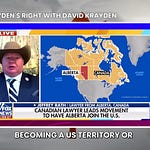October 22nd, 2025 changed everything. Google just achieved verifiable quantum advantage—and what they discovered breaks 200 years of physics.
This isn’t about faster computers.
This is about quantum systems exceeding the Carnot efficiency limits we thought were fundamental to reality itself.
Google’s Willow chip just performed one trillion measurements, peer inside molecules in ways that were literally impossible before, and shattered our understanding of what’s physically possible.
In this video, Julie breaks down…
How Google’s Willow chip achieved 99.97% fidelity (and why that matters)
The German breakthrough that violated 200-year-old thermodynamic laws
Why quantum error correction below threshold changes EVERYTHING
The Quantum Echoes algorithm that creates “butterfly effects” inside processors
Real timeline: When quantum moves from labs to industrial applications (18-36 months)
The 3-part pattern accelerating us toward fault-tolerant quantum computing
What this means for drug discovery, materials science, AI, and cryptography
The dark side nobody wants to discuss
Here’s what keeps Julie up at night: The gap between classical and quantum capabilities isn’t just wide—it’s exponential.
Tasks taking classical supercomputers 13,000 times longer are running on quantum processors TODAY.
As these systems improve, that gap grows.
We’re entering an era where quantum-powered discovery will reshape human civilization within a decade.
Organizations making moves RIGHT NOW will define the next decade.
Those waiting will become obsolete.
The bottom line: This is the most important technology transition of our lifetime. More important than the internet.
More important than AI alone.
Because quantum enables everything else - it’s the foundation accelerating every other field.
The only question is whether you ride the wave or get swept away by it.
About Julia McCoy
Julia McCoy is recognized as the founder, CEO, and President of First Movers, an AI integration and consulting firm.
She is an early adopter and definitive expert in AI-driven marketing transformation, focusing on helping marketers, teams, and creators adapt to AI with knowledge and authenticity.
McCoy previously owned a 100-person content writing agency, which she exited in 2021, anticipating the automation of content creation by AI.
Through First Movers, she works with companies globally to build custom AI integrations and provides training through platforms like First Movers R&D AI Labs, which aims to empower professionals in the AI revolution and foster a “first mover’s advantage.”
She also hosts the “Leaders of AI” podcast with David Shapiro and utilizes AI clones for content creation, including for her YouTube channel.
How Julia McCoy Cloned Her Voice & Avatar in 2025: The Complete Tutorial (Even AI Experts Are Shocked)
What is the 2nd Law of Thermodynamics
The Second Law of Thermodynamics
The Second Law of Thermodynamics is a fundamental physical law based on universal empirical observations concerning heat and energy interconversions.
It defines the concept of entropy as a physical property of a thermodynamic system and establishes that the total entropy of an isolated system will always increase over time, never decreasing spontaneously.
This means processes naturally move towards disorder or disorganization and are often irreversible.
Key implications include the impossibility of perpetual motion machines of the second kind and the fact that heat flows spontaneously from hotter to colder regions.
It also sets limits on the efficiency of heat engines.
Perspectives
Traditional interpretation: Universe tends towards disorder and a ‘heat death’
The universe is a closed system with decreasing usable energy and increasing entropy, suggesting it is winding down towards a ‘heat death’.
The law implies inefficiency, degeneration, and decay in all processes, indicating irreversible processes in the universe and an inescapably bleak fate.
The second law supports the idea that God rarely intervenes supernaturally in the world, as natural laws reveal His will.
Evolution can be seen as the second law at work, where self-replicating systems outcompete others, leading to increased stability and sophistication.
Alternative interpretation: The Second Law may not fully apply to complex, living systems.
The popular interpretation that the universe tends towards disorder conflicts with observations of increasing complexity, such as the formation of planets, stars, and life.
The second law, based on mechanical models like steam engines, is an inadequate metaphor for understanding living systems and the universe, which operate more like dynamic, multidimensional living systems rather than machines.
Some question whether the Second Law should be reclassified as a ‘principle’ rather than a ‘law’ due to its perceived limits
.












